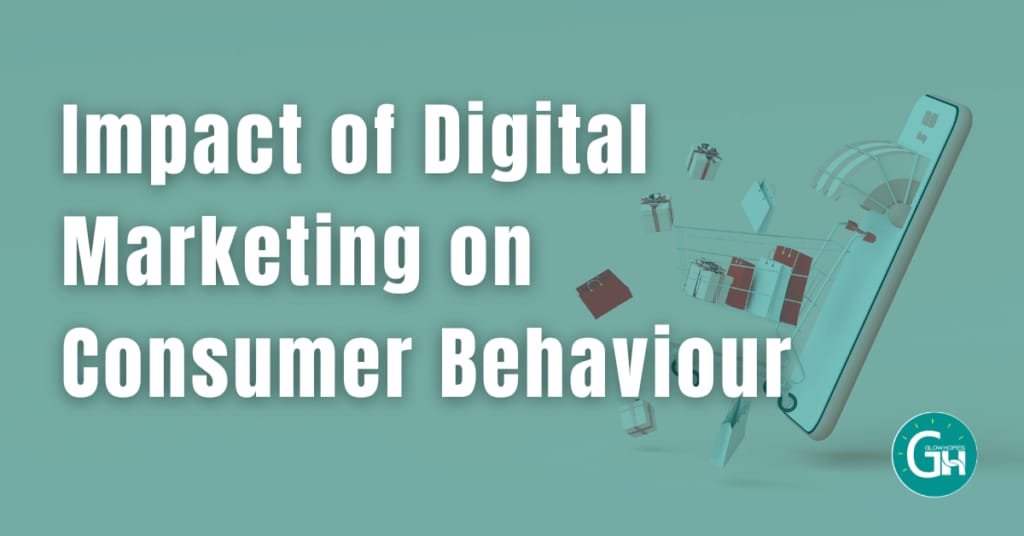The very rapid development of digital technology at this time has involved all types of media into the entire life of the community. So that human beings have always become accustomed to using technological sophistication. Not only physically in terms of technological advancement but also the influence of technological complexity that has affected the community, in any way, how we communicate, interact, transact and society. The purpose of this study is to determine how technological sophistication has an influence to change people’s behavior in using media. The theory used in this study is a digital theory, behavior change theory, media theory and the theory of convergence. This research is a qualitative descriptive study that attempts to explain and describe the real situation in society at this time by combining secondary data types. The data was analyzed to make a prediction for the future based on data from prior periods to get a picture of the reality past, present and future on the changes that are occurring. The results showed that new media have an impact on behavioral changes in media use which has implications for social change, culture, economy, and politics.
Introduction
The era of globalization has a powerful impact on all dimensions of public life. It leads to social changes, both positively and negatively. Technological developments make society accept the presence of problems that are structural which then penetrate all aspects of life. Associated with technological developments that impact on modernization, information technology is the fastest growing and direct influence on the level of civilization. If globalization is defined as the development of human culture, then the globalization of information and communication is the real impact on the development of communication technology (Jiang et al., 2015). Information in any form can be distributed quickly and quickly so as to influence the worldview, lifestyle, behavior, and culture of a nation. The flow of data very quickly leads to many people who are not able to filter the messages they receive, so unconsciously this information gradually affects the patterns of behavior and culture in the community.
This perception that has existed for a long time and is a benchmark becomes the attention of the public. As a result, social changes in the community began to rise to the surface. The present was almost lost and separated from the attention of the public. As a result, social changes in the community now began to rise to the surface (Dovidio et al., 2009). The most distinct effect felt among the public is that changes in lifestyle and behavior patterns have caused people to need something almost instantaneous, which has led to a change in cultural values in public life. Digital technology has incorporated all types of media into the entire life of humans. The integration of various press is known as media convergence (Herkman, 2012). Convergence is not only taking place in technology, but also in the culture of the community. The mode reading, listening, watching media is no longer separate, but technologically it is all together and more freely (technology savvy) in the grip of a person who is always on the go (mobile) (Mickel & Young, 2011). In addition, the convergence of media technology in terms of social significance.
Communities are moving towards an integration of digital culture that makes the world’s population into a global village (global village). No more traditional barriers that separate different people, all of whom interact cross-culturally (Krieber & Martin, 2008). But behind the rapid development of information technology, change has an outstanding effect against the habits of today’s society. This fact can be seen from the way today’s society communicates or interacts. In today’s world, people are more likely to communicate through electronic media and Internet media. Unlike in the past, it tends to communicate face-to-face rather than through media. Today the use of new media is dominated by teenagers. Facebook, Twitter, Instagram, media Skype are the most popular social networks today. Through their social networks to exchange information to meet their needs. Using social networking can reduce the time and be more efficient in interacting. But besides this, using social networks also has negative effects, one of the adverse effects is increasing laziness of the individual to meet people directly while interacting with them because one is too comfortable using social networking. This makes people more antisocial. The aim of this study was to describe the changes that have taken place in society in terms of user audience of media, both traditional media and new media such as online media.
Theoretical Framework
1. Digital Theory
Digital theory is a concept of time understanding on science and technology, that what is manual for all and what is complex becomes faster. Digital is a sophisticated and flexible method which makes it something necessary in human life. Digital theory is always associated with media because media is something that is constantly evolving. Many people are still not familiar with new media, which is a media formed from human interaction with information and communication technology (Morris & Higgins, 2010). Examples of new media including the Internet, mobile phones, social networks, the web, etc. while old media are the most important precursors that can connect people and information. Examples of old media include newspapers, radio, and TV.
2. Behavior Change Theory
Behavior is the result of the relationship between stimulus and response. Such behavior is divided into three domains, namely cognitive, affective and psychomotor. Cognitive is measured based on knowledge, affective is measured by attitude during psychomotor of action. The formation of behavior can be due to the process of maturation and the result of the process of interaction with the environment. Change can occur at any time and is a dynamic process and cannot be avoided (Ryan, et al., 2011). The formation or change is influenced by many factors in the process of behavior that come from within itself. These factors include the central nervous system, perception, motivation, emotion and learning. Behaviors that are applied to a person or organism do not occur automatically. But as a result of the stimulation received by the body in question. Both external and internal stimuli can be observed stimulating behavior, either directly, such as laughing, drinking and so forth or indirectly such as thoughts and feelings. The behavior of a society is formed by the environment in which it lives. This behavior lasted for quite a long time and continues to this day. Also the same action fro generation to generation in the community can happen. It can be a new culture for the individual and society in the field (Cowan et al., 2013).
3. Media Theory
Study of new media has emerged as one of the branches of communication theory because it claims that the traditional media environment is facing the challenges of technological innovation (Potter, 2011). One of the substantial changes to the media, Marshall McLuhan, the inventor of the term media, was made in the electronic revolution: the electronic effect of new media. McLuhan argued that the effect of the electronic revolution in the 1950s in the United States that teachers people’s lives in one world a little less than it is done with the other in which they grow up. For McLuhan, this revolution produces a classroom without walls as telecommunications and television bring a permanent information structure to society. Also McLuhan suggests that the effect of new technologies of communication occurred consciously not only at the level of knowledge and ideas. Technology can also affect people at the subconscious level (preconscious) of the ratio of emotion and perception patterns so that McLuhan said that “the medium is the message.” For McLuhan technological development already serves as a tool from the point of view of a contemporary look at language, the message is in the media and vice versa (McLuhan and Zingrone, 1997).
4. Convergence theory
This theory states that the formation or development of one’s personality is also determined by innate factors and factors in the surrounding environment. While the definition of media convergence is not only a change in technology or process technology, but also includes a change in the paradigm of industrial, cultural, social and encourages consumers to seek new information (Jensen, 2010). Media convergence occurs by looking at how people interact with others on a social level and use a variety of media platforms to create new experiences, new forms of media and content that connect each individual socially, and not only to other consumers but also to companies‘ producers’ media. Especially from the movement of increasing media convergence and the digitalization of information, this media convergence that unites Computing 3C (enter data through computers), Communication (communication), and Content (content material/content) (Quandt & Singer, 2009). Therefore, the theory of media convergence is a process that occurs after the development culture community.
Method
This research is a qualitative descriptive study that seeks to explain and describe the real situations in society today, especially those who use communication devices and telecommunications in terms of proportions, characteristics, and the like. In addition, the research approach used is qualitative research that combines secondary data types. The data was analyzed to make a prediction for the future based on the data from prior periods to get a realistic past, present, and future picture on the changes that are going to occur.
Results and Discussion
New media is a medium that provides the development of digitalization, convergence, interactive and related network message creation and distribution of messages. The ability to provide this interactivity gives users of new media the choice of what information is consumed, as well as controlling the output of the generated data and performing the desired choices. New media or social media has the ability to cover a wide range of interactive and interact with others. Currently, social media has become a medium of communication that is widely used in social processes (Hennig-Thurau et al., 2010). Social interaction, a common form of social process, can also be called a social process. Social interaction is an important condition for the occurrence of social activities. Social interaction is dynamic in relation to the relationship between individuals, groups with groups, as well as between individuals and groups. Human communication begins with face-to-face, then emerging media for a long time to communicate so that the media is more complex. Social interaction can take place in various ways, such as admiring each other, shaking hands, talking, fighting, and all this can be said about social interaction. Social interaction is essential in human life.
An example of socialization and communication with both the individual and the group. While the prerequisites for social interaction are: the existence of social contacts and communication. In social interaction an interaction should not touch or deal with the speaker, this time with the development of technology people can relate to other people through telephone, radio, television, and today the discussion is the Internet. In social interaction, interaction with media includes touches are secondary, but people will often not apply the connection that is of primary human contact that occurs when coming in contact, meeting directly or face to face. The development of increasingly sophisticated technology makes human society become individualistic; it is obvious that the emergence of the Internet as a bridge to connect new media such as social media and therefore able to be an alternative to interact on media for other individuals. Nowadays it can be said that the community has been hypnotized by the appearance of new media that offers all the ease in interaction bridged by a press.
The new press includes all known society mainstream media such as radio, television and so on. With Indonesia’s population has now reached 262 million people. More than 50 percent or approximately 143 million people have been connected to the Internet network throughout 2017. Most Internet users are still as high as 72.41 percent of the urban community. Use has been not only to communicate but also to buy things, book transportation, do business and create. Based on the geographical region, most Java community as 57.70 percent of Internet users. In addition, 19.09 percent of Sumatra, Kalimantan, 7.97 percent, 6.73 percent Sulawesi, Bali-Nusa 5.63 percent and 2.49 percent Maluku-Papua. While according to the age range, 49.52 percent of Internet users in the country are aged 19 to 34. These groups support new businesses in the realm of cyberspace, such as Telegram (celebrity Instagram) and YouTubers (YouTubers creators).
The proliferation of digital startups or startups was moved by this age group, whether they are founders or consumers. In the second position, over 29, Indonesia 35 percent of Internet users aged 54 to 55. This group is in the productive age and adapts to change. Teenagers aged 16.68 to 13 years ranked third with a share of 18 percent. Finally, the elderly over 54 years, only 4.24 percent use that Internet. Education level and economic level In addition to age, educational factors affecting Internet penetration in Indonesia. A total of 88.24 of them educated master and doctorate were connected to the Internet. Most graduates and diplomas have also used the Internet, which is 79.23 percent. Indonesia’s 143 million people are already connected to the Internet, about 62.5 million people using the Internet are lower-middle class people.
While the upscale community of 2.8 million people (“Berap Jumla Pengguna Internet Indonesia?” n.d.). Based on the data above, the advent of new media gradually weakens the values and norms in society, such as today’s youth who spend more time with gadgets and interact in a virtual world. It is for this reason that the teenager is harder to socialize in the community because real interaction processes or associative processes are carried out. With such a phenomenon that in an organization increasingly lost the values and norms of a society and associative processes will also be lost so that it appears that people are individualistic. Some of today’s society find it difficult to interact with others, but they can communicate in a virtual world, even some people should have a community. New media is indeed leading to weakening of the associative process carried out in society, but new media facilitates individuals and groups in the process of interaction in the virtual world, so it appears that they have called cyber organization. Currently, Indonesia is considered to be the Asian giant digital technologies that are sleeping. Indonesia is a huge market with its population of 250 million people. Indonesian smartphone users are also growing more.
Digital marketing research agency Emarketer estimates that by 2018, the number of active users of smartphones in Indonesia is more than 100 million people (Kominfo, n.d.). With that amount, Indonesia will become the country with the fourth largest number of active smartphone users in the world, after China, India and the US. Information technology is growing in Indonesia, creating a new culture in the public sphere, of course, today’s sophisticated technology has brought about massive changes, changing the shape of the local world community to a global world community. Advances in technology today are rapidly moving global society towards a social end. This process has reached a peak point as a result of modernization, which is referred to as contemporary hypermodernist. The stark reality is now competing to get its users using social media.
The social end marked by social transparency also disappears a condition of social conditions. New media to develop space for a new life for people so that without realizing it, the human community is living in two entities, the presence of a real neighborhood and virtual community life (cybercommunity). Real community is a community life that can be perceived by the senses as real life, where social relationships between members of the city built through sensing. While virtual community is a community life that cannot be directly perceived through human senses, but it can be felt and seen as reality. Currently, people are in two lives, consciously and in the real world they have a real life that demands to interact directly with other individuals, but they also play an active role in the virtual world because media convergence allows a person in the real world or interact chat, send messages, upload photos, and so on.
Cyber virtual community or society in the life of a group (network) relying entirely on social interaction and social processes to establish itself with- and fellow members of the virtual community. Social processes and social interactions in virtual communities, are temporary, and some have to be fixed in a relatively long time. While social interaction as the user only plays in the virtual world through browsing, chatting and then leaving. While social interaction that settled like social interaction and group life that lasts for a long time among members of other virtual communities. Internet users refer to it as a cyber community because everything he does in the virtual world is hanging out, saying hello, making love, doing business, learning and even stealing, and so on. Social media is now a place for the community to do any activity; the community interacts in the virtual world, has surpassed the exaggeration of the world.
So today’s society is classified as a cyber community because everyday life can never be separated with information technology. Therefore, today’s society is relative, can only become part of the cyber community, because they have two worlds, the real world where they indulge in a practical and virtual world, they are also artificially involved in the media, today has shaped a mindset, attitude and action or behavior for each individual that will bring people to a lifestyle of almost instantaneous but more effective.
The development of new media also has a positive effect on improving the quality of life, where the new press as an asset related to the information and communication technology revolution, which affects, among others: Advances in information processing power can expand talents and abilities. New systems will ensure greater personal comfort in each. Individuals will not only enjoy higher efficiency in performing daily tasks, but also more significant interaction with people and other interests, so it stimulates creativity and personal involvement.
The development of new media is not only a positive effect, but also has negative consequences on users who do not use and do not use new media with standard competence. Excessive use will lead to a collision with real life and a clash of cultures. The negative effects generated by the emergence of new media are: the pollution of many emerging information with false news or a hoax, the feeling of social and solidarity is diminishing, the advent of instantaneous culture, the spread of technology crimes such as copyright infringement or theft (cybercrime) and the development of hedonism and consumer attitude.
Conclusion
The highly developed information technology has created a new culture in the public sphere today, of course, today’s advanced technology has brought about massive changes, changing the shape of the world from local people to a global world society without time and space limits. With the advent of new media that provides digitization, and interactive convergence provides users to choose what information you want to eat. Meanwhile, social media is one of the new media that brings significant impact to society, which is changing the world to be very transparent thanks to the development of information, transportation and technology, so fast and so great impact is the world community.
The growth of online media access in Indonesia is increasing new habits and culture of media for individuals and society, which has implications for social change, culture, economy and politics. So new media can not be stopped to attack, but new media is not completely a negative impact on society, because new media also has many positive effects, so it can be used to support the improvement of people’s lives that is more advanced and modern but still hold firm culture Indonesia. This research is still straightforward so the expectations of researchers their advanced study is deep and broad, to provide an overview and have a positive impact on improving people’s lives Indonesia in the use of media.
Read Also:
- Towards 6G: Future Communication Technology
- General Architecture Of Wireless Technology
- 6G Technology
- Cell-Phone Technology
- 6G and 7G Cellular Network Technology








Leave a Reply